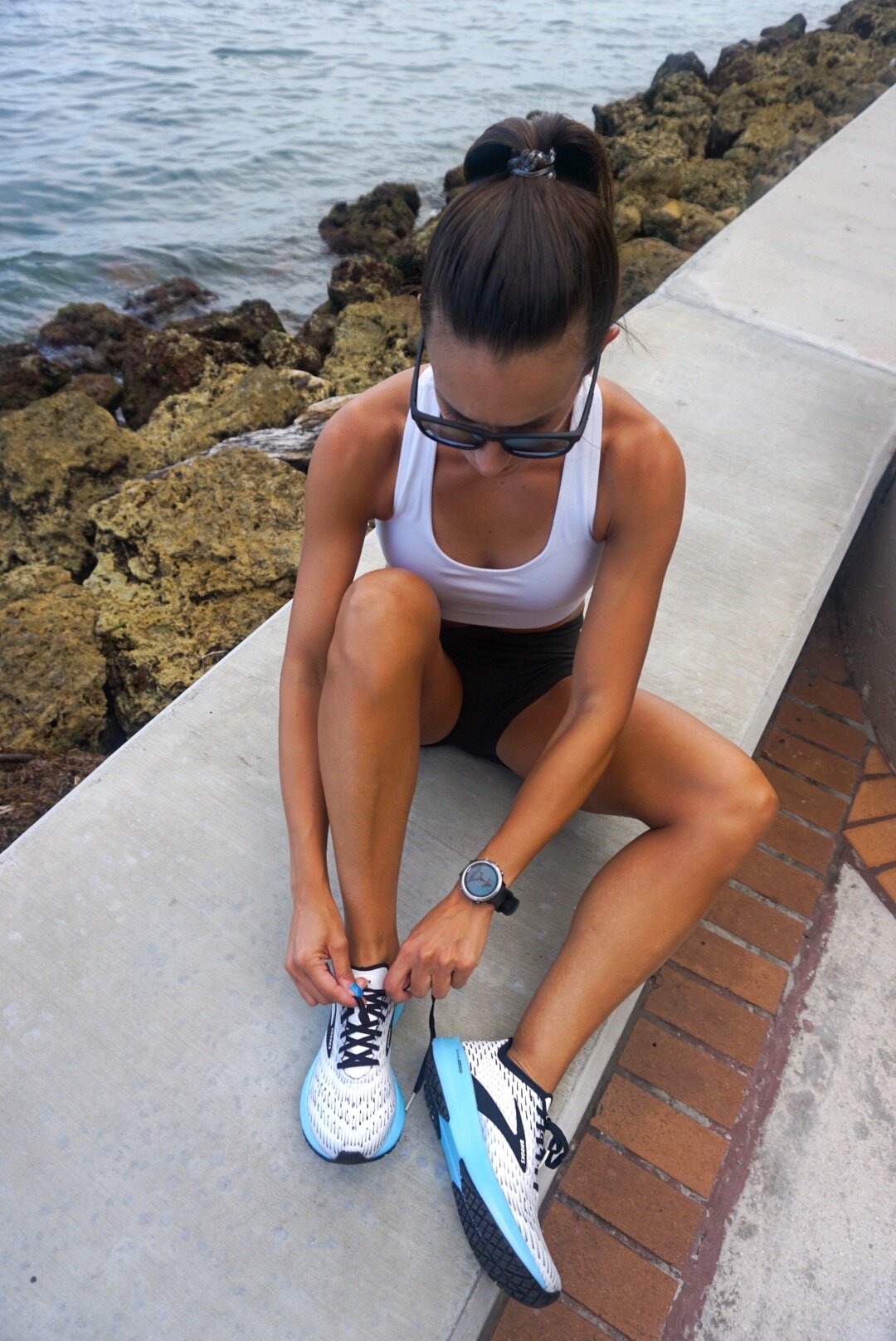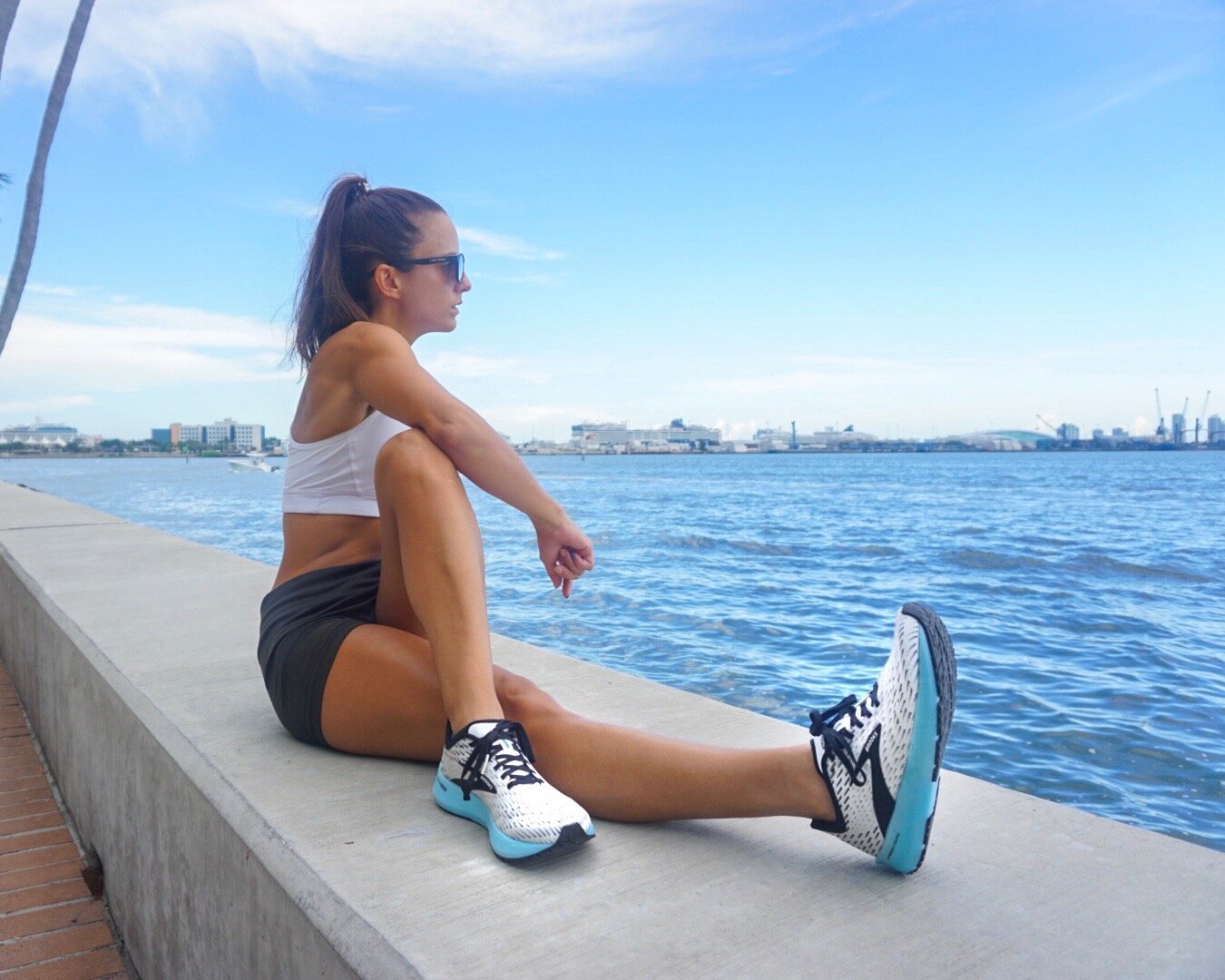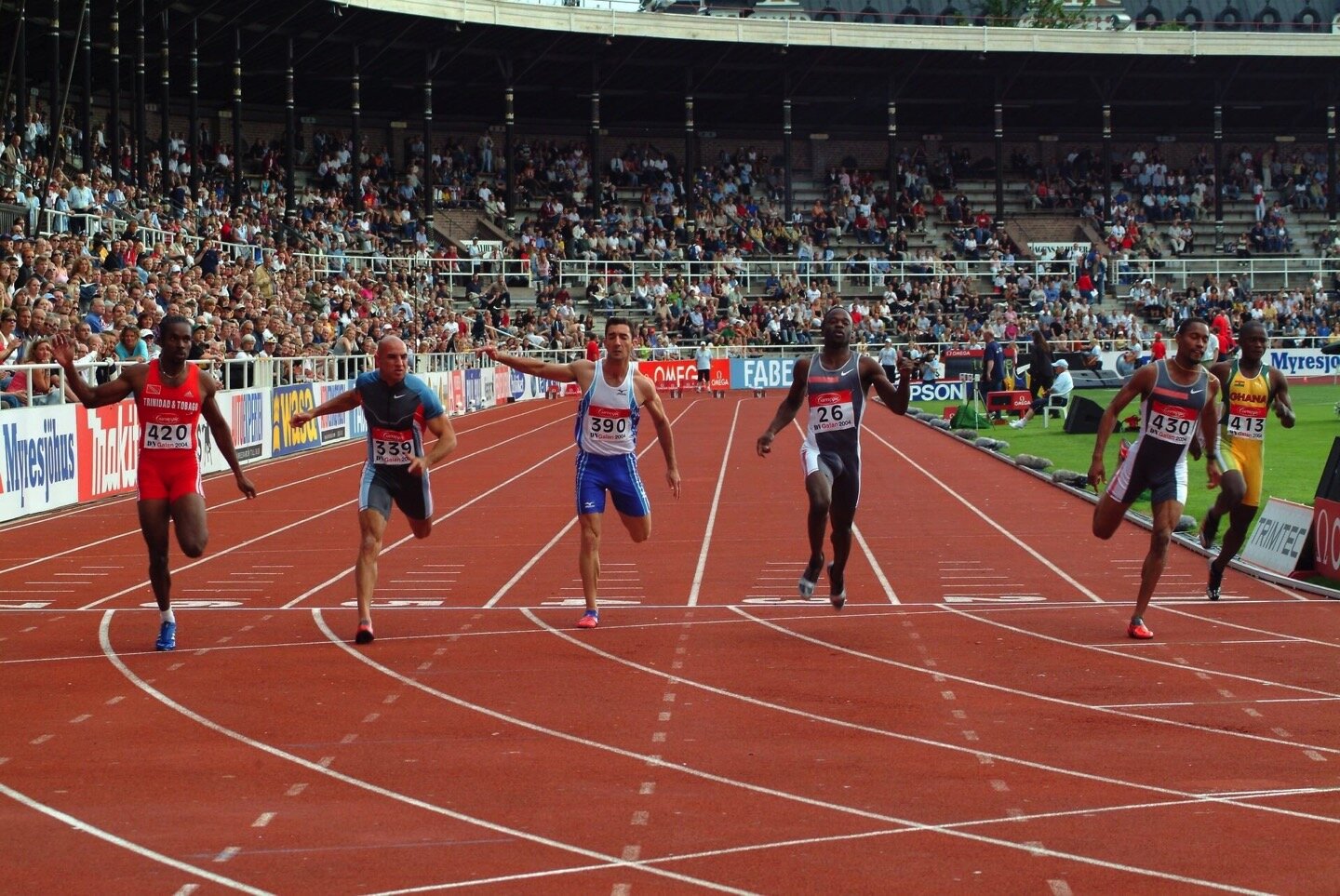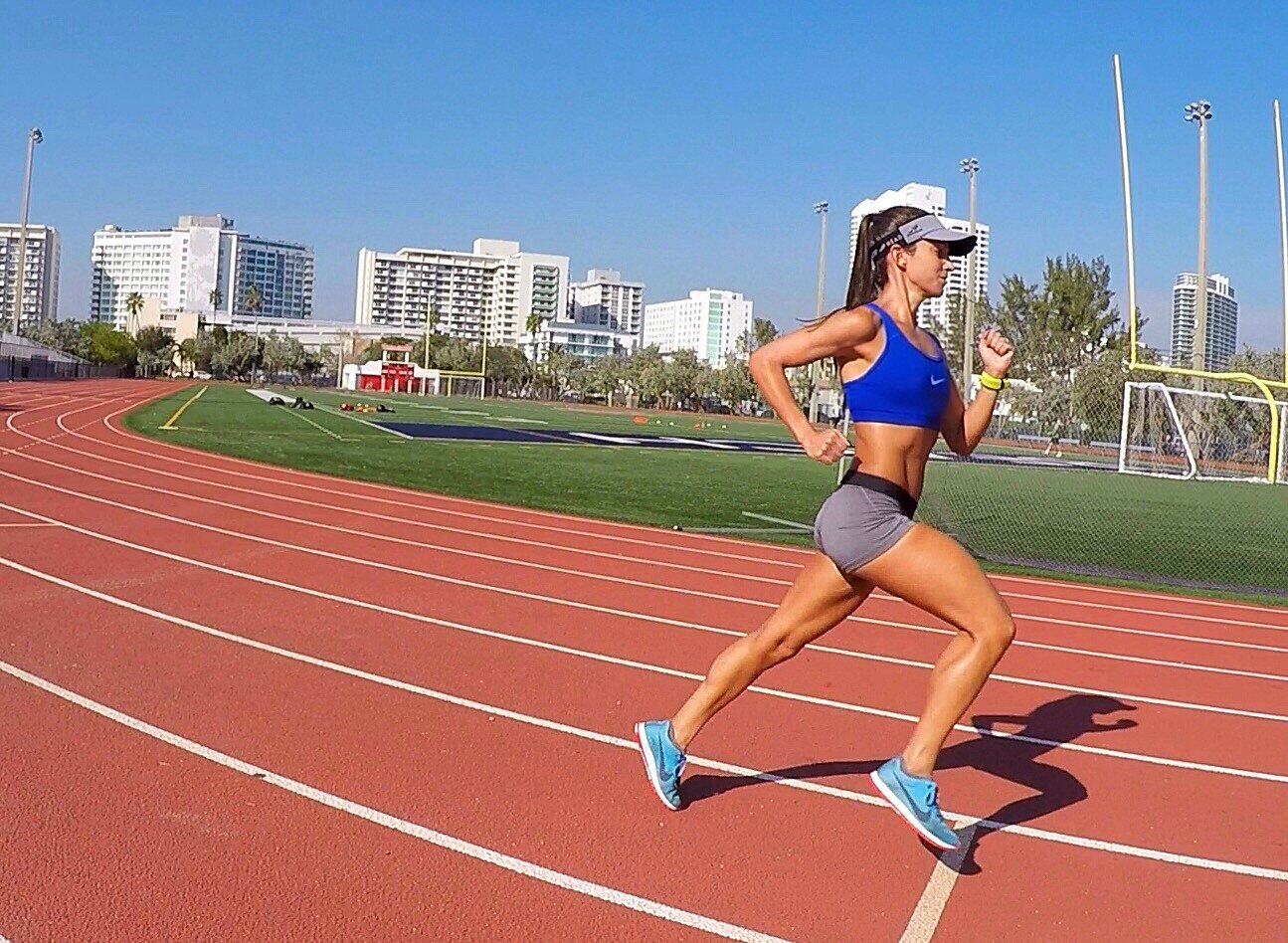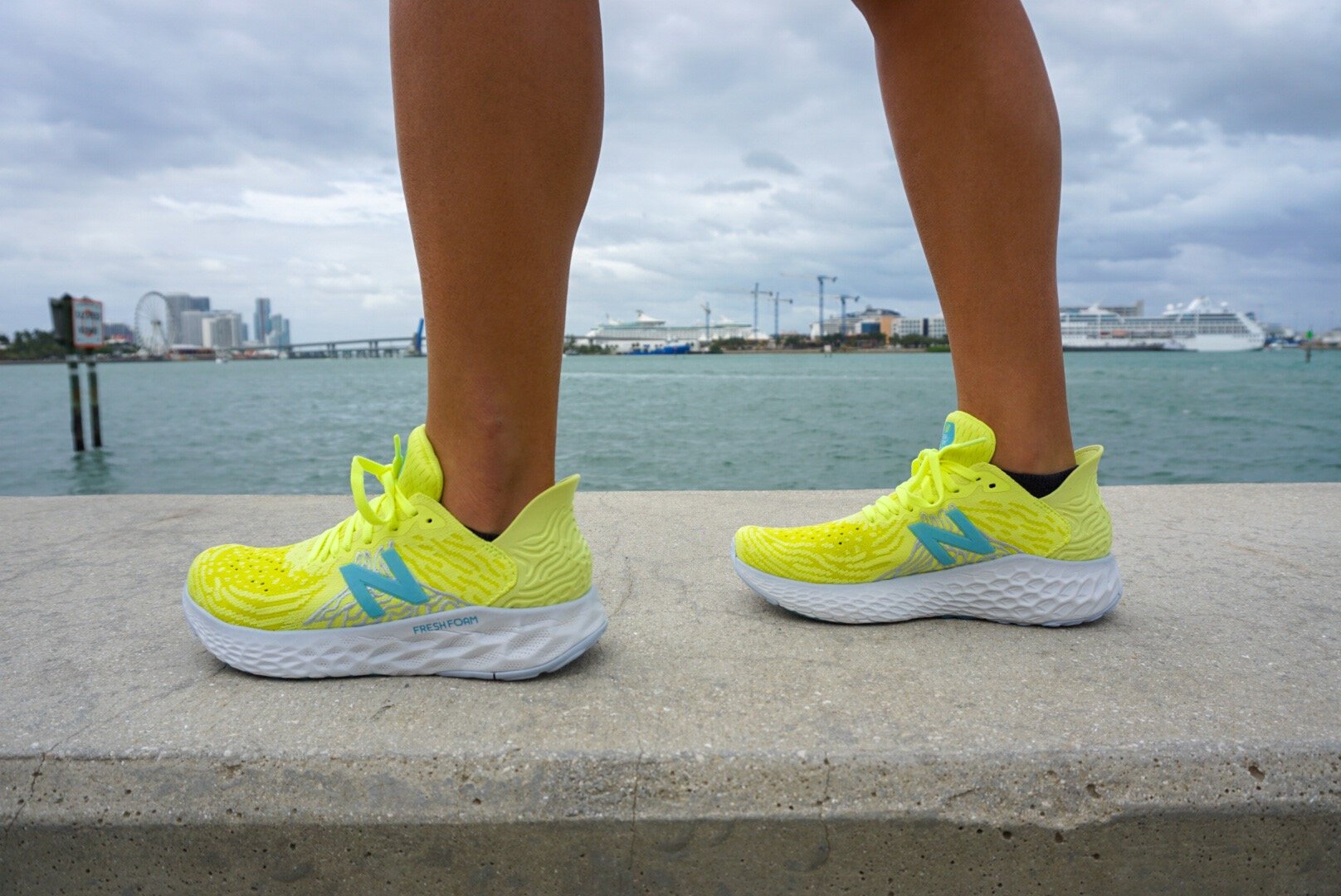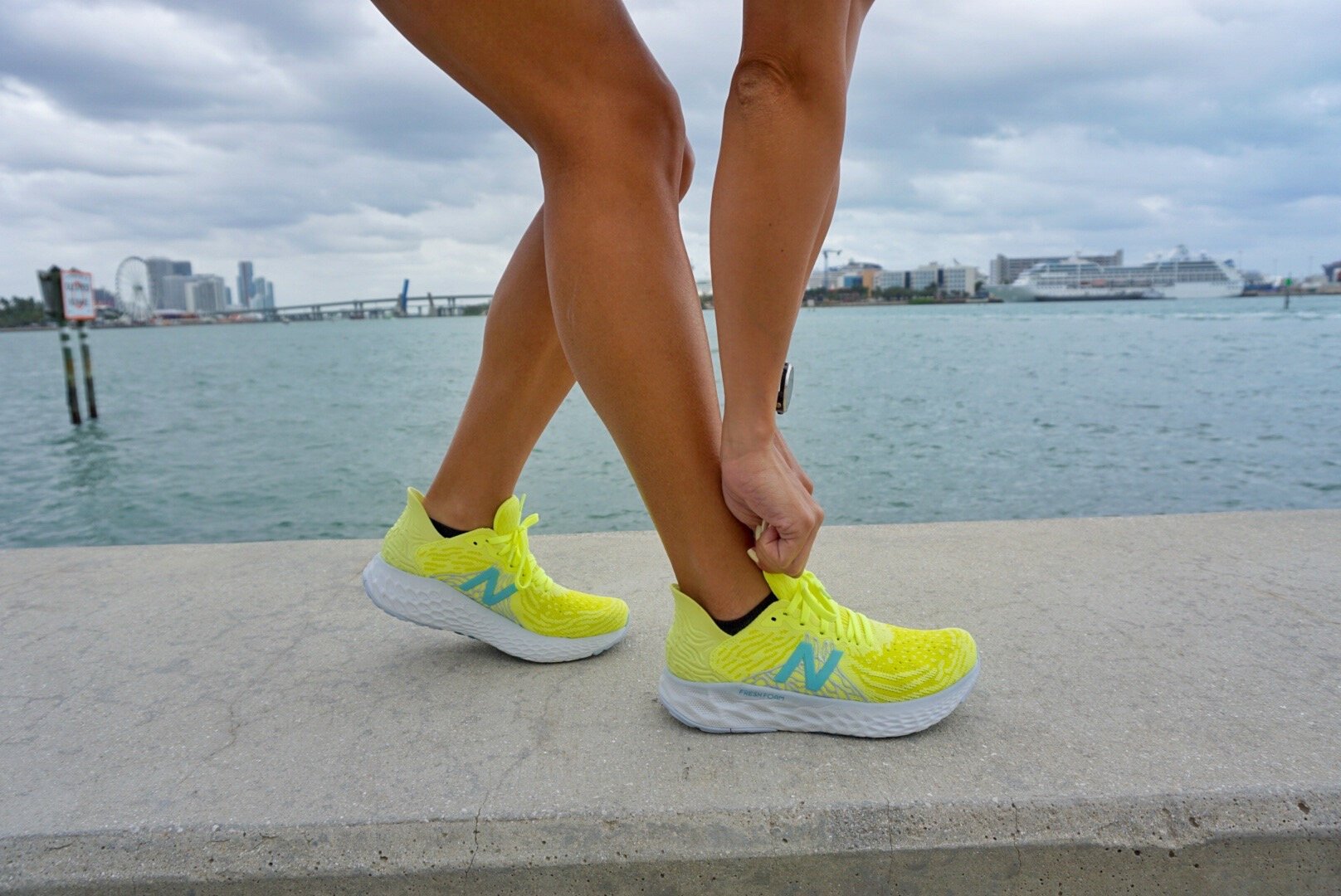Sponsored by Zappos. All opinions are my own.
With fall racing around the corner, most of us are gearing up for an intense summer of fast miles in the heat. As tough as it is to train during this time, we just need to find what motivates us to get up and get it done. I don’t know about you but a fast pair of running shoes really does the trick to get me excited to work hard. There are so many to choose from, though, so it can get a little overwhelming trying to find the perfect shoe rotation. There are several components to shoes that determine what they are best used for. You have to consider the weight, materials, responsiveness, and cushioning levels when picking what to wear for long runs, speed sessions, track workouts, and your every day easy runs.
I’ve been so happy with my recent addition of the Brooks Adrenaline that I got so intrigued by what else the brand has to offer. I’ve been in search for a shoe that works for longer distance speed work, since that’s my goal for the summer. Thankfully I got my hands on a pair of the Brooks Hyperion Tempo from Zappos. The Hyperion is a line that was created with input from some of the top elite runners, so you can probably guess they are made to go fast!
Zappos never lets me down. I can always count on finding any pair I’m looking for with their extremely large selection of running shoes and expert customer service that is always ready to answer all of my questions. As a VIP member you not only get these benefits, but also super fast and free shipping—even during the pandemic I got my shoes within a couple of days! Free returns for a year is also part of the VIP program, which you won’t find anywhere else. If you love to shop and want the best selections, I highly recommend being a VIP member, which is also free by the way!
Weight Matters
Most runners try to find the lightest pair of shoes for every run. In general, this is a good idea. No one wants to be pounding the pavement with a bulky pair. Normally the lightest shoes are made for short distance speed work like track sessions and for racing, and developed with materials that most likely are the least supportive and cushioned since this will add weight to the shoe. The tricky part about finding the right shoes for half and full marathon training is that you have to look hard for a shoe that has both components—lightweight AND supportive. The Brooks Hyperion Tempo falls into this category.
Faster Recovery
I first tested these out for a short, easy run to break them in a little, and then added a few strides at the end to see how they felt for faster paces. I was impressed to find that they really didn’t need to be broken in—they felt flexible and soft from the start. The DNA FLASH midsole is infused with nitrogen, which is what helps the shoe give off a superb energy return. This is important for fast running because you want that force you’re putting into the shoe to be used to push off and accelerate as fast as possible. Basically, the goal is zero waste of energy, so that you can recover faster. Shoes that don’t provide this make your feet and muscles work harder to gain the speed you are aiming for, therefore increasing fatigue and delaying recovery.
Unlike other distance running shoes, the Brooks Hyperion Tempo are far from rigid. The upper is made with stretchy material that hugs the foot, but are pretty roomy in the forefoot. This means when feet swell after long distances, which is normal, you don’t have to worry about the shoes feeling tight during the second half of those long sessions. After using these for the second time on a 12 mile run in 85-degree weather, I was happy to see that they truly felt breathable even given how much I sweat during these hot summer runs! Breathable shoes means less risk of painful blisters and chafing, which can be a major limitation to any amount of running. You are guaranteed to feel light on your feet, since this pair does not hold on to moisture.
If you are preparing for a half or full marathon this summer, the Brooks Hyperion Tempo is a great option for longer and faster runs. There are two sleek color combinations to choose from, so head over to Zappos to order yours today and sign up for that VIP membership so you can reap the rewards!


